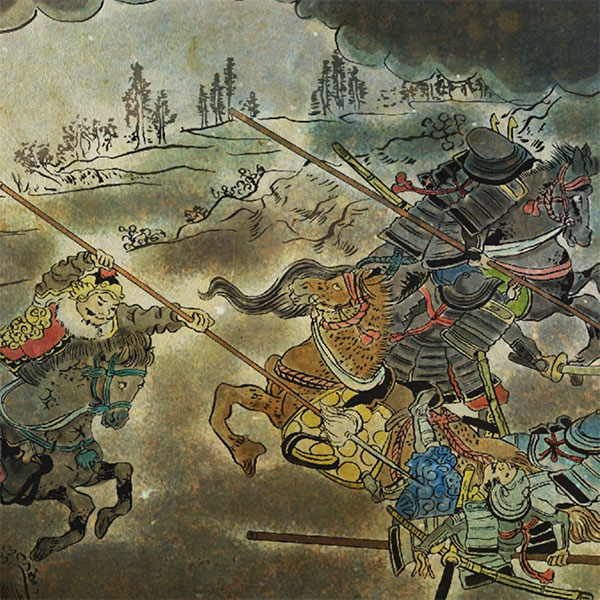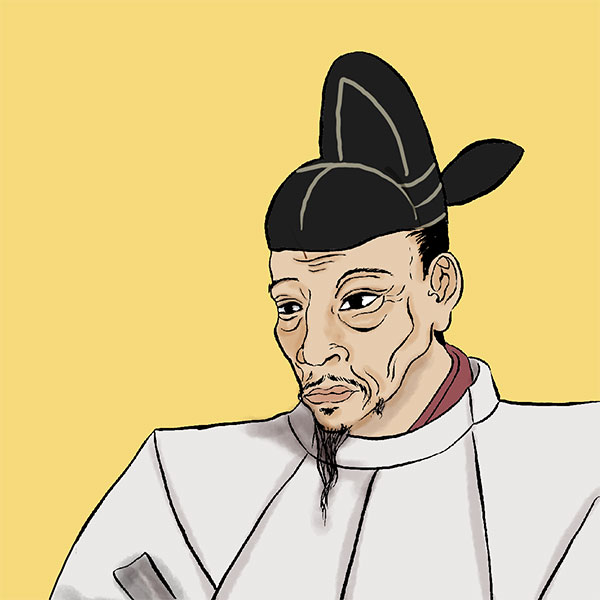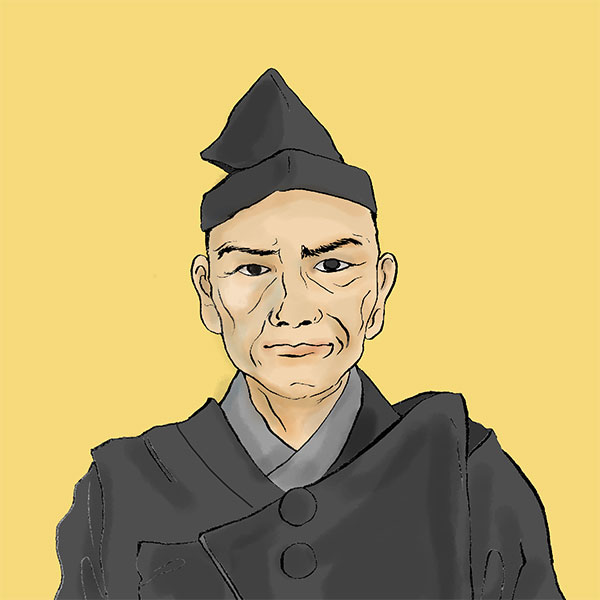Ryukyu invasion (2/2)Satsuma and the Shimazu clan took control of Ryukyu.

Ryukyu invasion
- Article category
- case file
- Incident name
- Invasion of Ryukyu (1609)
- place
- Okinawa Prefecture
- Related castles

Shuri Castle
world heritage
Urasoe Castle

Nakijin Castle
world heritage
- people involved
However, the Ryukyu Kingdom did not even send an envoy to return the favor. For this reason, in 1604, Yoshihisa Shimazu requested King Shonei to send an envoy to repay him for sending the castaways away. At that time, Tokugawa Ieyasu stated that the reason he sent the castaways home was because the Ryukyu Kingdom was a vassal state of Satsuma. This was based on the fact that when Toyotomi Hideyoshi sent troops to Korea, he considered the Ryukyu Kingdom to be under the Shimazu clan's ``power'', that is, under its military command.
The Ryukyu Kingdom side objected to this. Shimazu Yoshihisa's request was rejected because sending a reciprocal envoy in response to his request would mean admitting that Japan was a dependent country.
Meanwhile, in 1605, a Ryukyu ship returning from the Ming Dynasty washed ashore in Hirado. The shogunate, thinking that they had another chance, politely delivered the stranded party to the Ryukyu Kingdom, and asked Shigenobu Matsuura, the lord of Hirado, to express their gratitude to the Ryukyu Kingdom. Seeing this, Mr. Shimazu feels a sense of crisis. This was because the exclusive position that Shimadzu had held until now as ``the gateway to the Ryukyu Kingdom'' was beginning to waver.
In fact, the Shimazu clan's finances were in tatters due to their defeat in the Kyushu conquest and the sending of troops to Korea. In addition, in 1606, it was discovered that Chigyochi was in disrepair and it was difficult to collect annual tax. The increase in useless land, amounting to 20% of the total land area, further worsened the financial situation. The only way to rebuild this country was to bring the Ryukyu Kingdom, which had wealth through trade, under its control. For the new lord of the domain, Tadatsune Shimazu (Iehisa), who thought so, Shigenobu Matsuura's movements were a hindrance.
Shimazu Tadatsune requested permission from the shogunate to dispatch troops to Oshima in June, citing the lack of return envoys. Although they thought they would attack the Ryukyu Kingdom, the dispatch of troops that year was canceled because envoys from the Ming Dynasty were coming to the Ryukyu Kingdom at the same time.
At this time, the envoy who came from the Ming Dynasty was Xia Ziyang, who wrote the ``Ryukyu-roku'' about the Ryukyus. Natsu Ziyo urged the Ryukyu Kingdom to strengthen its military in preparation for the Satsuma army. In response, the three commanders (officials who assist the king and administer state affairs) replied, ``There is no need to fear as the spiritual and majestic God of the Ryukyu nation will help us.'' Since ancient times, the power of the priests has been important in Ryukyu, and they were revered as guardians of the king and the land. Concerned about this current situation, Natsu Ziyo has the Ryukyu Kingdom make weapons and provides guidance on defensive measures.
After that, Tokugawa Ieyasu once again asked the Ryukyu Kingdom to send an envoy, but the Ryukyu Kingdom continued to refuse. Tadatsune Shimazu also presented an ultimatum, but the Ryukyu Kingdom refused, and the subjugation of the Ryukyus began.
The invasion of Ryukyu was an overwhelming victory for the Shimazu army.
On March 4, 1609, the Satsuma army departed from Yamakawa Port (present-day Ibusuki City, Kagoshima Prefecture) with about 3,000 men and about 100 ships. The general is Hisataka Kabayama, a senior vassal, and is heavily armed with 734 guns and approximately 300 bullets per gun. On the other hand, the Ryukyu Kingdom's main weapons were bows, even though they received support from the Ming Dynasty, and they were not used to fighting. It can be said that the outcome was obvious even before the fight.
On March 7, the Satsuma army arrived at Amami Oshima and took control of the island without almost any fighting. Amami Oshima was under the control of the Ryukyu Kingdom, but it gave up on the Ryukyu Kingdom and cooperated fully with the Satsuma Domain. After that, the Satsuma clan departed from Oshima on March 20th and headed for Tokunoshima.
The Ryukyu Kingdom was also aware of these moves by the Satsuma Domain. After receiving reports that the Satsuma army had arrived on Amami Oshima on March 10, the Ryukyu Kingdom dispatched its elder, Ibun Tenryuji, to request surrender, but Ibun hid and did not meet the Satsuma army. (There seems to be a theory that there was a battle).
The Satsuma army captured Tokunoshima on March 22nd. The people of Tokunoshima fought with log sticks and bamboo spears against the Satsuma army, which made full use of guns, but they were defeated after suffering hundreds of casualties. Afterwards, the Satsuma army arrived at Okinoerabu Island on March 24th. When the master of Okinoerabujima heard of Tokunoshima's defeat, he surrendered. On March 25th, they entered Unten Port in the northern part of the main island of Okinawa, and captured Nakijin Castle on March 27th. In response, the Ryukyu Kingdom dispatched Sairaiin Kikugakure as a peace envoy, but peace did not take place here, and it was decided that a peace conference would be held in Naha.
The Satsuma army continued to move south by sea and land, arriving at Naha Port on April 1st and besieging Shuri Castle. There was a battle here, and the Ryukyu Kingdom once repelled the Satsuma fleet, but was defeated by the Satsuma army. Afterwards, a meeting was held to discuss peace, and on April 5th, King Shonei of the Ryukyus descended from the castle and Shuri Castle was opened. Thus, the Shimazu clan's invasion of Ryukyu came to an end, and the Ryukyu Kingdom became a vassal state of the Edo shogunate and Satsuma domain.
Edo Shogunate and Ryukyu Kingdom after the Ryukyu invasion
After the Ryukyu invasion, King Shonei of the Ryukyu Kingdom and about 100 of his senior retainers set out for Satsuma. The following year (1610), he left Satsuma for Edo with Tadatsune Shimazu and had an audience with Ieyasu Tokugawa at Sunpu Castle, and on August 28th, he had an audience with Hidetada Tokugawa, the second shogun, at Edo Castle.
At this time, Shimazu Tadatsune was granted control over the Ryukyus by Ieyasu in the "Gouchōsho," and Amami Oshima was placed under the direct control of Satsuma. On the other hand, Hidetada decided that ``the Ryukyu Kingdom would continue to exist without changing the status of the country by making people with other surnames the rulers.'' This was done in hopes that the Ryukyu Kingdom would support trade between Japan and Ming, and because of this, the Ryukyu Kingdom was able to continue to be a ``kingdom''. However, the Shimazu clan was allowed to collect annual tax from the Ryukyu Kingdom, and was effectively under the control of the Shimazu clan.
After the audience, King Shonei and his friends returned to Satsuma and were forced to write a petition stating, ``From now on, you must pledge allegiance to Satsuma.'' In the case of Ryukyu, the Kishomon is an important vow made to the gods and Buddha. At this time, Master Jana, one of the three commanders, refused the petition and was executed as a result.
In addition, Satsuma handed over the ``Fifteen Rules'' to the Ryukyu Kingdom. The contents included banning tribute goods to the Ming Dynasty without Satsuma's orders, banning trade by merchants without Satsuma's permission, banning trade vessels from traveling from Ryukyu to other territories, and collecting annual tribute. The annual tax was determined to be approximately 90,000 koku based on land surveys, and rice, basho cloth, etc. were paid as annual tax.
King Shonei and his friends accepted this and departed from Satsuma in September 1611, returning to the Ryukyu Kingdom for the first time in two and a half years. Furthermore, in order to show both domestically and internationally that the Ryukyu Kingdom was subject to the Edo shogunate and Satsuma, it was decided to send a ``Kaion envoy'' to Edo when the king was replaced, and a ``Keiga envoy'' to be sent to Edo when the Tokugawa shogun was replaced. Obliged. This is what is commonly referred to as ``Edo nobori,'' and its exotic and gorgeous appearance became the center of attention.
Afterwards, the Ryukyu Kingdom maintained a well-balanced relationship with the Qing Dynasty, which rose after the Ming Dynasty, and continued to maintain a bilateral relationship of being subordinate to both the Edo Shogunate and the Qing Dynasty. After the Meiji Restoration, the Ryukyu Kingdom would continue to maintain its status as a "kingdom" until the Ryukyu Kingdom was abolished.
Reread the article on the Ryukyu invasion
- people involved

- WriterNaoko Kurimoto(Writer)I am a former travel industry magazine reporter. I have loved history, both Japanese and world history, since I was a child. I usually enjoy visiting temples and shrines, especially shrines, and often do ``pilgrimages to sacred places'' themed around historical figures. My favorite military commander is Ishida Mitsunari, my favorite castle is Kumamoto Castle, and my favorite castle ruins is Hagi Castle. My heart flutters when I see the ruins of battle castles and the stone walls of castle ruins.








